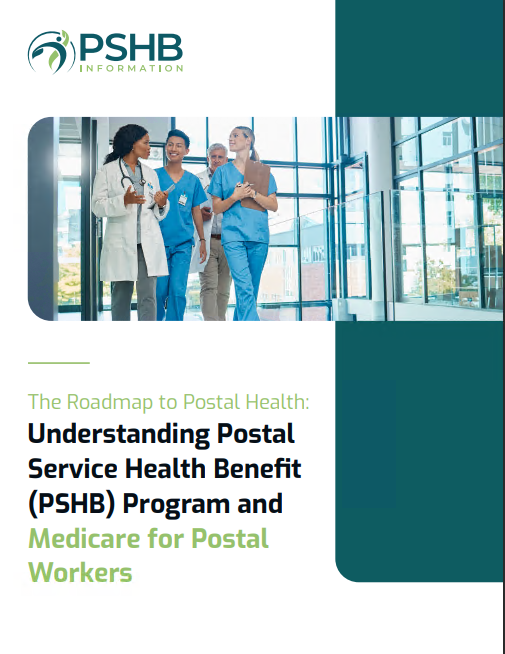Key Takeaways
-
Medicare helps reduce healthcare costs significantly but doesn’t cover everything.
-
Understanding gaps in Medicare coverage can help you make informed decisions about supplemental insurance options through PSHB.
What Does Medicare Cover?
Medicare is designed to provide comprehensive healthcare for those aged 65 or older, as well as younger individuals with specific disabilities. While it’s an excellent resource, it’s important to know exactly what’s included to make the most of it.
Medicare Part A: Hospital Insurance
Part A covers inpatient care in hospitals, skilled nursing facilities (under certain conditions), hospice care, and some home healthcare services. For 2025, there’s a $1,676 deductible for each benefit period, along with daily coinsurance costs for extended stays.
Medicare Part B: Medical Insurance
Part B handles outpatient care, preventive services, durable medical equipment, and doctor visits. There’s an annual deductible of $257 in 2025, after which you’ll typically pay 20% coinsurance for most services.
Medicare Part D: Prescription Drug Coverage
This part helps cover the cost of prescription medications. In 2025, a new $2,000 annual cap on out-of-pocket prescription costs significantly helps beneficiaries. The maximum deductible is $590, and costs depend on the plan you choose.
Medicare Advantage (Part C)
Medicare Advantage plans are offered by private insurers and combine the benefits of Parts A, B, and often D. They may also include additional benefits like vision and dental care. While these plans have limitations, they often provide lower overall costs for enrollees who use in-network providers.
What Medicare Doesn’t Cover
Despite its comprehensive nature, Medicare leaves some significant gaps. Here are key areas where Medicare doesn’t provide coverage:
Long-Term Care
Medicare doesn’t cover custodial care, which includes assistance with activities of daily living like bathing, dressing, or eating. Long-term care services, whether in a nursing home or at home, are not part of standard Medicare benefits.
Dental, Vision, and Hearing Services
Routine dental exams, cleanings, eyeglasses, and hearing aids are not covered under Original Medicare. These gaps can lead to significant out-of-pocket costs for beneficiaries.
Overseas Healthcare
Travel enthusiasts should be aware that Medicare typically doesn’t cover medical care outside the United States, except in very limited circumstances.
Cosmetic Procedures and Non-Essential Services
Cosmetic surgeries or treatments deemed non-essential by Medicare are excluded.
Deductibles and Coinsurance
Medicare coverage comes with its share of deductibles, coinsurance, and copayments, which can add up, especially for those requiring frequent medical care.
How Medicare Reduces Out-of-Pocket Costs
While Medicare doesn’t cover everything, it significantly reduces out-of-pocket costs for its beneficiaries. Here’s how:
Preventive Services
Medicare Part B offers a range of preventive services at no additional cost to you, such as screenings for cancer, diabetes, and cardiovascular conditions. These services can help catch potential health issues early, saving you money in the long run.
Coordination with PSHB Plans
For Postal Service employees and retirees, PSHB plans integrate seamlessly with Medicare to provide a more comprehensive level of coverage. Many plans reduce or eliminate deductibles and coinsurance when you enroll in Medicare Part B.
Prescription Drug Coverage Limits
The $2,000 out-of-pocket cap for prescription drugs in 2025 is a game-changer, providing financial relief for individuals who require expensive medications.
Hospital Stay Coverage
Medicare Part A covers a significant portion of costs for hospital stays, easing the financial burden of inpatient care. However, ensuring you have supplemental coverage through PSHB can help manage additional expenses.
Enhancing Your Coverage with PSHB
Postal Service Health Benefits (PSHB) plans work alongside Medicare to fill coverage gaps. Here’s how you can make the most of this combination:
Lowering Your Costs
When you enroll in Medicare and PSHB together, many PSHB plans offer cost-sharing reductions, such as waived deductibles and lower copayments. These savings can make a big difference, especially if you have chronic conditions requiring ongoing care.
Comprehensive Benefits
PSHB plans often include dental, vision, and hearing benefits that Medicare lacks. This added coverage ensures that your overall healthcare needs are met without significant out-of-pocket costs.
Prescription Drug Savings
Many PSHB plans coordinate with Medicare Part D to offer reduced premiums and copayments. They may also include pharmacy networks to help you save even more on medications.
Emergency Coverage Abroad
Some PSHB plans provide emergency healthcare coverage while traveling internationally, filling one of Medicare’s most notable gaps.
Navigating Enrollment Timelines
To take full advantage of Medicare and PSHB, it’s crucial to understand enrollment timelines and requirements:
Medicare Enrollment Periods
-
Initial Enrollment Period (IEP): Starts three months before your 65th birthday and ends three months after. Enroll during this time to avoid penalties.
-
General Enrollment Period (GEP): Runs from January 1 to March 31 for those who missed their IEP, with coverage beginning July 1.
-
Annual Enrollment Period (AEP): October 15 to December 7, allowing changes to your Medicare plans for the following year.
-
Special Enrollment Periods (SEP): Triggered by specific life events like losing employer coverage.
PSHB Open Season
The PSHB Open Season typically occurs in late fall. In 2025, it’s essential to review your options to ensure the plan you choose aligns with your healthcare needs and budget.
Key Strategies to Maximize Benefits
Combining Medicare and PSHB effectively requires careful planning. Follow these strategies to optimize your healthcare coverage:
-
Review Plan Brochures: Each PSHB plan has unique features, including varying deductibles, coinsurance, and out-of-pocket maximums. Compare them to find the best match for your needs.
-
Coordinate Enrollment: Ensure you enroll in Medicare Part B to qualify for PSHB benefits that reduce out-of-pocket costs.
-
Use Preventive Services: Take advantage of Medicare’s free preventive services to stay ahead of potential health issues.
-
Understand Out-of-Pocket Limits: Be aware of PSHB’s out-of-pocket maximums to avoid unexpected costs.
-
Plan for Prescription Costs: Use the new $2,000 cap under Medicare Part D to manage medication expenses effectively.
-
Evaluate Supplemental Benefits: Consider PSHB plans that include dental, vision, and hearing coverage to fill gaps in Medicare.
-
Check Travel Coverage: If you travel frequently, choose a PSHB plan offering international emergency healthcare benefits.
How PSHB and Medicare Work Together for You
By understanding how Medicare and PSHB complement each other, you can ensure that you’re fully covered without overpaying for healthcare services. This powerful combination reduces gaps in coverage, limits out-of-pocket expenses, and offers peace of mind knowing that your medical needs are addressed.









